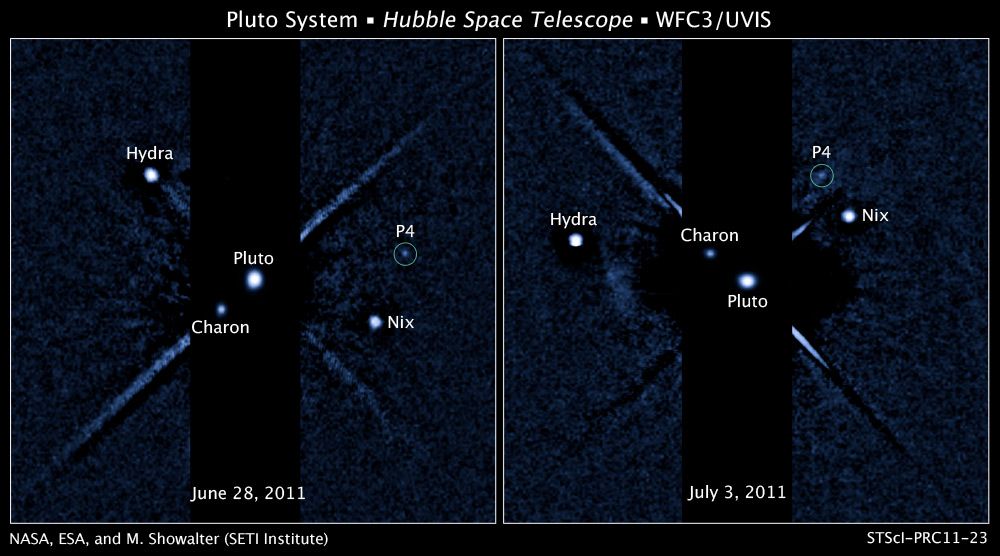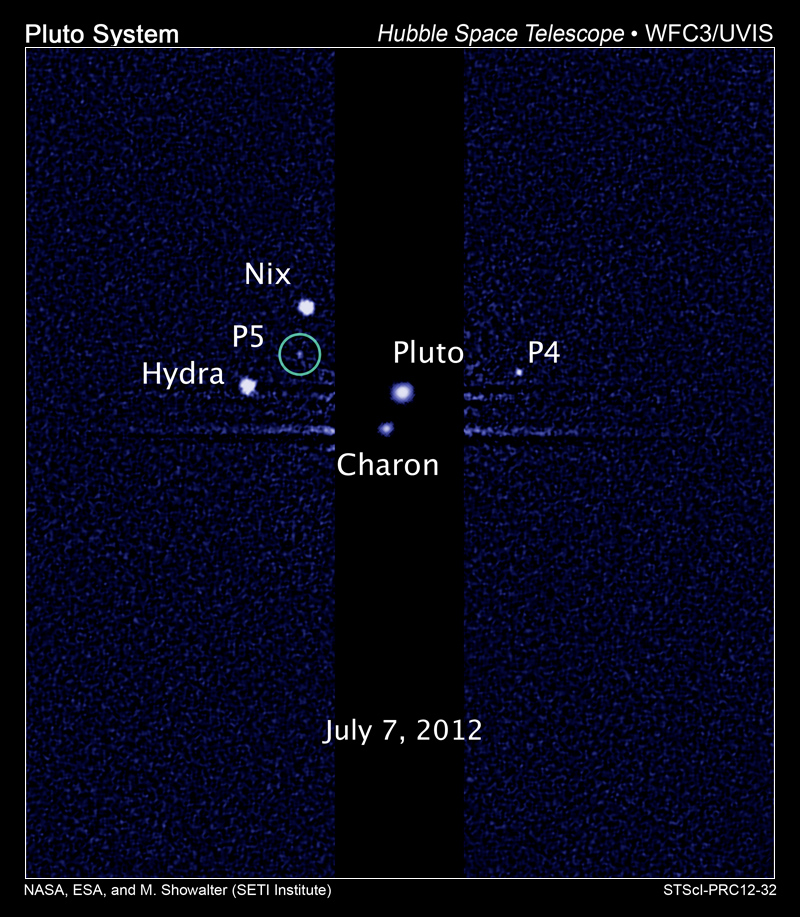Hubble finds Newest Fifth Moon orbiting Pluto
A team of astronomers using NASA's Hubble Space Telescope is reporting the
discovery of another moon orbiting the icy dwarf planet Pluto. The moon is
estimated to be irregular in shape and 6 to 15 miles across. It is in a
58,000-mile-diameter circular orbit around Pluto that is assumed to be
co-planar with the other satellites in the system.
"The moons form a series of neatly nested orbits, a bit like Russian dolls,"
said team lead Mark Showalter of the SETI Institute in Mountain View, Calif.
The discovery increases the number of known moons orbiting Pluto to five.
The Pluto team is intrigued that such a small planet can have such a complex
collection of satellites. The new discovery provides additional clues for
unraveling how the Pluto system formed and evolved. The favored theory is
that all the moons are relics of a collision between Pluto and another large
Kuiper belt object billions of years ago.
The new detection will help scientists navigate NASA's New Horizons
spacecraft through the Pluto system in 2015, when it makes an historic and
long-awaited high-speed flyby of the distant world.
The team is using Hubble's powerful vision to scour the Pluto system to
uncover potential hazards to the New Horizons spacecraft. Moving past the
dwarf planet at a speed of 30,000 miles per hour, New Horizons could be
destroyed in a collision with even a BB-shot-size piece of orbital debris.
"The discovery of so many small moons indirectly tells us that there must be
lots of small particles lurking unseen in the Pluto system," said Harold
Weaver of the Johns Hopkins University Applied Physics Laboratory in Laurel,
Md. "The inventory of the Pluto system we're taking now with Hubble will
help the New Horizons team design a safer trajectory for the spacecraft,"
added Alan Stern of the Southwest Research Institute in Boulder, Colo., the
mission's principal investigator.
Pluto's largest moon, Charon, was discovered in 1978 in observations made at
the United States Naval Observatory in Washington, D.C. Hubble observations
in 2006 uncovered two additional small moons, Nix and Hydra. In 2011 another
moon, Kerberos, (old temp name P4), was found in Hubble data.
Styx, temporary name P5, the latest moon was detected in nine separate sets
of images taken by Hubble's Wide Field Camera 3 on June 26, 27, and 29, 2012
and July 7 and 9, 2012.
In the years following the New Horizons Pluto flyby, astronomers plan to use
the infrared vision of Hubble's planned successor, NASA's James Webb Space
Telescope, for follow-up observations. The Webb telescope will be able to
measure the surface chemistry of Pluto, its moons, and many other bodies
that lie in the distant Kuiper Belt along with Pluto.
The Pluto team members are:
M. Showalter (SETI Institute)
H.A. Weaver (Applied Physics Laboratory, Johns Hopkins University)
S.A. Stern, A.J. Steffl, and M.W. Buie (Southwest Research Institute).

 Credit: NASA, ESA, and M Showalter (SETI Institute)
Credit: NASA, ESA, and M Showalter (SETI Institute)
